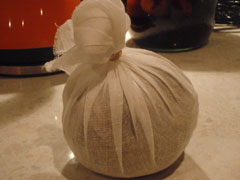




Back to the Intro Page







By now, as part of the agrarian revolution, there were new feeding methods for cattle and this meant that meat was available all year round. Improved transport allowed foods to be moved around, everyone could eat cheddar cheese and fish could be transported inland quickly. Roast beef became the national dish. Muslin cloth allowed people to make steamed puddings. The wealthy would eat macaroni, curry, rice and even turtle soup all from British colonies and countries abroad. Gardening and gardens became popular for those who could afford a house with a garden and some people had hothouses to grow exotic fruits. Alcohol was very cheap which caused many health problems. Other major health risks, apart from alcoholism, were diabetes and heart disease and that sounds rather familiar. In those days many cooking appliances, such as copper and brass pans, could also poison people if acidic foods were cooked in these pans. Bread was made whiter with alum, a poisonous salt. Other food was coloured with copper or lead and this was also poisonous. This was also the time when cooking books started to be published for the general public. Mary Berry wasn't yet around. In 1737 the first recipe was published for dripping pudding. Basically this we now know as Yorkshire Pudding. It was made using a batter mix and the fat, or dripping, from the weekly roast. The advantage for the poor was that it was quite filling and so less, more expensive meat was needed. Richard remembers when he had a Sunday lunch at his grandmother's, she was born and lived much of her life in Yorkshire, she would serve little Yorkshire puddings first.
Back to the Stuarts Hoots - FoodForward to the End of the Georgians Hoots - Food

